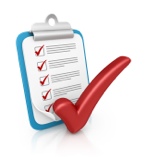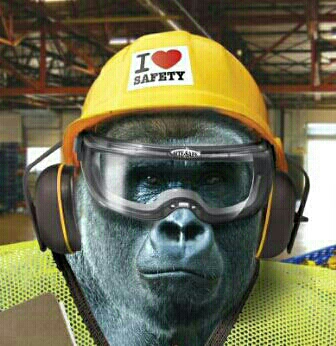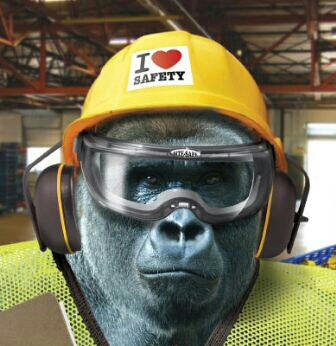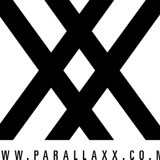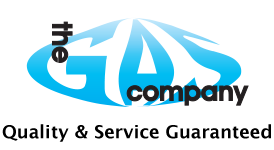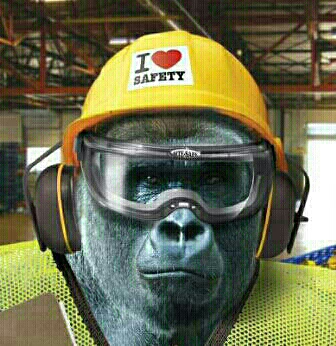Information
PROJECT
-
Location
-
Conducted on
-
Prepared by
-
Individual clauses of OHSAS18001 are included in this checklist, please check each clause of the standard and audit your compliance against the requirements of the standard. NOTE: should any non conformities be identified then please make brief notes in the text box provided and provide an action date to close out any non conformity
OHSAS18001 SAFETY MANAGEMENT SYSTEMS PART 1
Policy Documentation
-
Clauses 4.1 ; 4.2. <br>Has the organisation defined and documented the scope of its OHS Management System?<br>Has the organisation documented it OHS policy? Is it dated and authorised by top management? Does it commit to continuous improvement, comply with legal and other requirements preventing injury and I'll-health? Has it been communicated to employees and all those working under the organisation's control? Is it made available to all interested parties and is it subject to periodic review?<br>
-
The 'scope' is a brief explanation of the activities the organisation carries out and the products and/or services it provides it's customers. This is usually documented in the Safety Management Manual.
Safety Improvement & Continual Improvement
-
Clauses 4.2; 4.3.1; 4.3.3; 4.6<br>Is there a Safety Improvement Plan for the year, based on significant risks and targets? Can continual improvement against objectives and targets be demonstrated? Is a review of the Safety Management System carried out in accordance with the standard and attended by senior management?
-
This question tests the level of management commitment that your Safety Management System is active and that you can demonstrate continuous improvement in safety performance. A formal written plan of 'SMART' safety objectives should be available and monitored up-to-date identifying the current status of your performance. Your objectives should include 'health' as well as safety in equal measure, as they are a reflection of your Policy statement and they must be cascaded throughout the organisation to ensure all staff play their part.
Legal Requirements
-
Clause 4.3.2. <br>Have relevant legal requirements been identified? Are future changes that may affect the Safety Management System considered when identifying relevant legal and other requirements?
-
The organisation should list all relevant legal and other (eg Policy statement,Group, industry or product)requirements applicable to the activities and services it undertakes. It must keep this list up-to-date in line with new or amended legal and other requirements and interpret what is required to management and staff, to ensure that they meet their legal responsibilities.
Roles, Responsibilities & Authorities
-
Clause 4.4.1. <br>Have roles, responsibilities and authorities for the safety system been defined? Has a management representative for safety been appointed?
-
Although everyone has a responsibility for health and safety, certain members of staff for example your safety representative(s), maintenance personnel and first aiders or fire wardens will have key roles to play. Safety responsibilities should be agreed at all levels, formally documented and communicated to relevant members of staff, to help ensure that they are implemented.
Training Needs
-
Clause 4.4.2. <br>Does the organisation have a written procedure that addresses how training needs are met, provided and evaluated? Have all training and skill needs been met? Are there records to demonstrate the delivery of training and verify competency? How have contractors' competences been demonstrated?
-
Competence, training and awareness is a vital part of your Safety Management System. Your training plans or matrices should feature the significant risks associated with the tasks conducted within each of your departments. For example, use of sharps in warehouse or packing areas and use of computer equipment in the office. Fire safety should be included in all plans. Training should also take into account differing levels of responsibility, ability, language and literacy.
Staff Involvement & Consultation
-
Clause 4.4.3. <br>Is there a documented procedure to ensure employees' active participation in spotting hazards, risk assessments, determining controls, incident investigation, development and review of Safety Management System policies and objectives? Are staff consulted when there are any changes that affect their Health & Safety? Do they know who their safety representatives are?
-
There are legal requirements in many countries throughout the world, to consult staff on these matters and it follows that the organisation's Safety Management System cannot be fully effective without the full involvement of its people. The workforce is entitled under British law for example, to elect representatives to discuss OHSAS issues.
Communications, Consultation & Participation
-
Clause 4.4.3. Continued. <br>Does the document procedure for communication, consultation and participation include arrangements for dealing with external interested parties? Does the procedure ensure arrangements for consultation with contractors on issues that might affect their OHSAS?
-
OHSAS 18001 requires the organisation to ensure that, when appropriate, relevant external interested eg enforcement authorities, insurers, trade unions, former employees etc are consulted about pertinent OHSAS issues. As more and more organisations become reliant on outsourced contractor expertise, the requirement to consult with all those who work under the organisation's control is also essential.
Document Control
-
Clauses 4.4.4; 4.4.5. <br>Are documents and data adequately identified, controlled, protected and stored? Is there ready access to documents where they are required?
-
Ensure that your health and safety documentation suitably and sufficiently describes the main elements of your OHSAS management system, their interaction and reference to related documentation, including risk assessments and safe systems of work. Documents, including records, should exist to ensure the effective planning, operation and control of processes that relate the management of the organisation's OHSAS risks. All documents should be subject to document control principles ie approval prior to use, version status identified, availability where they need to be used and be kept up-to-date.
Monitoring and Measuring Performance
-
Clause 4.5.1. <br>Is there a written procedure for monitoring and measuring OHSAS performance on a regular basis? Are monitoring techniques reactive (eg analysis of accident data) as well as proactive (eg health screening, safety inspections etc)? Has conformance with the OHSAS performance and operational controls necessary to ensure OHSAS performance measured? Have measuring devices that might be used to monitor OHSAS performance been calibrated?
-
The clause of the standard is all about checking the effectiveness of the OHS system and conformance with the operational controls and performance standards that the organisation has set itself through the OHS programme, or that may be required by legislation, eg workplace exposure limits. Both quant active and qualitative measures should be used and monitoring of health and safety in equal measure should be evident. Recording of any analysis should be sufficient to facilitate corrective and preventative action.
Legal Compliance Register
-
Clause 4.5.2. <br>Does the organisation check that it is legally compliant? Are these checks recorded?
-
To fully meet the requirements of the Standard, the organisation must test that it is meeting it's legal responsibilities. This can be done through audits, safety inspections and conducting a review of statutory maintenance records for example. The outcome of this check should be recorded.
Non-Conformities, Incidents & Accidents
-
Clause 4.5.3. <br>Have non-conformities, incidents and accidents been adequately and effectively identified, evaluated and investigated (eg is there a hazard log book in operation)?
-
In addition to your findings you should also monitor progress on accident investigations and ensure the outcome of any staff issues that have been reported are being followed up.
Reporting Issues
-
Clause 4.5.3. continued. <br>Are all staff aware of the process for reporting a safety or welfare issue?
-
All staff (including temporary employees) should know how to report accidents and near-misses. This information should be communicated to them from induction. There should also be a documented procedure to record, investigate and analyse incidents, including arrangements to identify the need for corrective and preventative action.
Risk Assessment & Inspection Close-Out
-
Clause 4.5.3. continued. <br>Is there a documented process for ensuring close out of risk assessment and safety inspection actions, etc, in a timely manner?
-
Many organisations use an 'action tracker' system to co-ordinate the output of their risk assessments, safety inspections, incidents etc. it is best practice to identify the status of these at local levels, within departments, as measure of safety performance.
Retention & Disposal of Records
-
Clause 4.5.4. <br>Is there a documented procedure defining which OHS records should be kept? Are retention times and method of disposal stipulated? Are OHS records legible, clearly identified, traceable and stored so that they are protected from loss or damage?
-
Records are vital as they demonstrate how active and effective the OHS management system is. They may also need to be relied on to help defend the organisation against accident or I'll-health claims.
Internal Audits
-
Clause 4.5.5. <br>Does the organisation carry out internal audits of its occupational health and safety system. Are audits scheduled according to significant risk? Have previous findings from internal audits been effectively recorded, co-ordinated and monitored through to closure? Have the lessons learned been communicated to all interested parties?
-
This is a mandatory clause of the Standard. Internal audits should be planned so that activities of highest risk are audited more regularly. Audits should be carried out by competent individuals, independently of the areas they work in. It is a requirement of the Standard that audits are carried out in accordance with the schedule and that findings are auctioned in a timely manner.
Meetings
-
Clause 4.6. <br>Does the organisation hold meetings where safety is discussed? Are future changes that may affect the OHS system considered during meetings?
-
This question tests the level of management commitment from the top of the organisation down. Safety and staff consultation on relevant health and safety issues should be included in the agenda of your departmental meetings.
OHSAS 18001 SAFETY MANAGEMENT SYSTEM, PREMISES, HOUSEKEEPING PART 2
Premises
-
Clauses 4.4.1; 4.4.6. <br>Buildings, walls, windows, floors, stairs, walkways etc clean and in a good state of repair?
-
Look 3-dimensionally and identify anything that presents a hazard.
Cleaning
-
Clauses 4.4.1; 4.4.6 continued. <br>What is the standard of cleaning? Is it effective?
-
Cleaning and housekeeping discipline is a vital part of health and safety and helps reduce hazards in the workplace.
Slips, Trips & Falls
-
Clauses 4.3.1; 4.4.1; 4.4.6. <br>Layout, slips, trips and falls assessment procedures?
-
Slips, trips and falls still account for a significant number of lost time injuries in the workplace. Your organisation should continually review it's health and safety arrangements to reduce the risk of slips, trips and falls and ensue staff are aware how they can play their part in preventing hazards.
Racking
-
Clause 4.4.6. <br>Proper stacking/stability and storage procedures?
-
Storage arrangements are often overlooked in many organisation's safety arrangements. It is a legal requirement to check racking for example, and ensure that storage arrangements are safe in terms of fire prevention and stability.
Ventilation, Lighting, Temperature and Fume Control
-
Clauses 4.4.1; 4.4.6. <br>Ventilation (natural and artificial), Suitable lighting (natural and artificial), Temperature control plus Dust/Fume control?
-
Your organisation's requirements for lighting and ventilation will vary dependent on the activities carried out in each area. You should continually review your arrangements to ensure that lighting and air flow (or lack of) does not pose a risk to people working on your premises.
Your organisation's requirements for dust and fume control will also vary dependent on the activities that are undertaken on your premises. If you work with hazardous substances for extraction and pollution prevention will be higher and will be covered in legislation.
OHSAS 18001 PERSONNEL, RISK ASSESSMENT & MATERIALS PART 3
Personnel Medical & Safety Issues
-
Clause 4.5.1. Does the organisation effectively control medical/health surveillance in liaison with Personnel and Medical staff?
-
Your organisation's requirements for occupational health will vary dependent on the activities that are undertaken on your premises. If you work with hazardous substances for example, your standards for ill health prevention and occupational health screening will be higher and will be covered in legislation.
Vulnerable Persons
-
Clauses 4.3.1; 4.3.2. <br>Does the department have effective provision for staff at higher risk (eg young persons, pregnant workers and disabled staff)?
-
It is a legal requirement to ensure that vulnerable individuals are not put at additional risk while working on or visiting your premises. You should review arrangements throughout your premises to ensure that they do not pose a risk to vulnerable individuals and that appropriate measures are taken to reduce risk.
Personal Protective Equipment -PPE
-
Clause 4.3.1. <br>Have all relevant staff been issued with required PPE? Does PPE conform to 89/656/EEC (carry a CE mark)? Are there records of issue? Have all staff been trained in their use? Are all staff aware of replacement procedures?
-
Personal protective equipment is a 'last line of defence' for your workforce and should only be provided following a careful examination of the tasks you undertake and once you have decided on additional collective measures to reduce risk of exposure. If you do decide to supply staff with PPE, it is a legal requirement to train them how to wear it properly, to ensure that they wear it and provide replacement free of charge.
Risk Assessment -Hazards, Risks & Controls
-
Clause 4.3.1. <br>Is there a documented. Procedure for identifying hazards, assessing risks and determining controls?
-
OHSAS18001 requires a proactive methodology for hazard identification and risk assessment. The methodology should provide for the prioritisation of hazards and the identification of those that are significant. Risk assessment records and any actions that are required should be kept up-to-date.
Risk Assessment Programme
-
Clause 4.3.1. continued <br>Is there a risk assessment programme of all tasks, workplace (incl workstations), manual handling, fire, DSE risk assessments, etc to be carried out? Are future changes that may affect the SMS considered when compiling the risk assessment programme?
-
A risk assessment plan or programme should be documented, identifying all the significant hazards that require to be assessed. Those activities identifying as medium to high risk should be assessed more frequently. Future changes to the organisation, it's products and services should also be assessed to consider their affects on the SMS and the risk assessment programme revised accordingly.
Display Screen Equipment -DSE
-
Clauses 4.3.1; 4.4.3. <br>Have all DSE users been considered and are they included on an inventory? Have users completed a self assessment questionnaire and been graded? Have high users been informed of the availability of free eye and eyesight testing?
-
The use of display screen equipment poses one of the most common types of risk to people in the workplace, yet it is often considered to be low risk and many staff who use display screens, those included on production equipment and laptops receive an individual assessment at least every 2 years. It is a legal requirement for staff to receive free eye tests. If they use display screens for the majority of their working day.
Close Out of Risk Assessments
-
Clause 4.3.1. <br>Can effective and timely close out of risk assessment actions be demonstrated?
-
It is a weakness for some organisation's to 'design out risk' and accept that there is nothing further that can be done to reduce risk. The smallest improvements in additional control can make a big difference to the working environment and the occupational health and safety of staff. Additional controls should be highlighted on the risk assessment form and co-ordinated as an action to be addressed within a suitable timescale.
COSHH Assessments
-
Clause 4.3.1. <br>Have detailed COSHH risk assessments been carried out against a programme of tasks and substances used within the organisation?<br>
-
All workplaces will have some form of hazardous substances eg Cleaning materials in use. It is a legal requirement to conduct a risk assessment and to ensure that people are not exposed over legal limits.
Chemicals & Gases
-
Clauses 4.3.2; 4.4.6; 4.5.2. <br>Are chemicals and gases stored and handled correctly in the area?
-
Gases are often overlooked in COSHH assessments. Consider compatibility of chemicals and gases, integrity of bunds, location of flammable materials, transfer equipment used, measures to prevent fire (eg earthing connections which prevent static sparking etc).
Ongoing Improvement
-
Clause 4.3.3. <br>Is there ongoing improvement activity associated with reduction of hazardous materials?
-
Processes should be reviewed on a regular basis to decide if hazardous substances can be substituted with materials that are less harmful or if engineering solutions can be found to eliminate or reduce exposure.
OHSAS 18001 MACHINE GUARDING, ELECTRICAL & SAFE SYSTEMS OF WORK
Machine Guarding
-
Clause 4.3.1. <br>Has all machinery received an equipment guarding risk assessment?
-
This question will only be applicable if you have a workshop or production environment with machinery. It is a legal requirement to access the need for existing machinery to have guarding. All new equipment supplied within the EU should have suitable guarding already installed to CE mark standard. If guarding is installed it should be sufficient to isolate operators from the hazards of moving parts within the machine and reduce risks. Guarding should be regularly tested and inspected to ensure it is fit for use.
Emergency Stops
-
Clause 4.4.7. <br>Are emergency stops available and have they been tested? Are tests recorded?
-
This question will only be applicable if you have a workshop or production environment with machinery. It is a legal requirement to assess the need for existing machinery to have e-stops. If e-stops are installed they should be sufficient to stop the machinery and ensure that operators are not exposed to additional hazards of moving parts within the machine and reduce risk. E-stops should be regularly tested and inspected to ensure they are fit for use.
Permit to Work
-
Clauses 4.3.1; 4.4.2. <br>Is there a Permit to Work system for the department, to ensure contractors operate within the requirements of Company Policy? If so, are relevant personnel trained to the Permit to Work system?
-
Many organisations only operate a Permit system for work involving contractors. Some do not operate a Permit to work system at all. This can be a major weakness as all work involving high risk activity should be assessed before work starts using a Permit (or similar) system.
Safe Systems of Work
-
Clauses 4.3.1; 4.4.2. <br>Are Safe Systems of Work sufficient and effective? Consider significant areas of risk. Have all relevant personnel been trained to the Safe Systems of Work?
-
If a task has been assessed as medium to high risk they should be accompanied by a formal documented safe working instruction (or safe system of work). Staff should be trained in their use and they should be reviewed regularly to ensure their continued suitability.
Mobile Plant
-
Clauses 4.3.1; 4.4.6. <br>Is mobile plant (eg fork trucks) regularly serviced, maintained and operated within safe controls? Have there been any near misses?
-
This question will only be applicable if you have a warehouse or production environment with fork trucks or other forms of transport for example in operation. It is a legal requirement to assess the equipment and the work environment in which it is operating to ensure that it is safe and that individuals, including visitors are not put at risk. The equipment should be regularly tested and inspected to ensure that it is safe to operate. Relevant staff should receive formal training in the use of the equipment.
Portable Appliance Testing
-
Clause 4.4.6. <br>Has portable equipment been tested to a planned frequency? Has new equipment been captured for testing?
-
All workplaces will have some form of electrical equipment. However, not all will be classed 'portable' and there is a misconception that all electrical equipment should be subject to portable testing.
Electrical Testing (Other than PAT)
-
Clause 4.4.6 continued. <br>Have earthing/low voltage/residual current circuit breakers etc been provided where necessary? Are they subject to regular testing?
-
All workplaces will have some form of fixed electrical equipment. In order to reduce the risk of serious injury it should be fitted and tested by competent electricians and include a series of protective equipment such as residual current devices.
Planned Preventative Maintenance - PPM
-
Clause 4.4.6 continued. <br>Is there a planned preventative maintenance programme in operation? Is it reviewed in line with changes on the premises, plant and equipment?
-
Your premises should be maintained in accordance with a planned preventative maintenance programme that lists all the facilities, fixed and moving equipment that needs to be serviced and tested. The PPM programme is useful audit document and is usually managed by the maintenance or facilities provider.
Mobile Access Equipment - Ladders, MEWPs, Scaffolding
-
Clause 4.4.6 continued. <br>Are there tower scaffolds, ladders or other mobile access equipment on the premises? If so, are they regularly inspected and maintained? Are people trained to work at height?
-
It is a legal requirement to ensure that equipment use to access heights is regularly inspected, serviced and maintained. It is also the organisation's legal responsibility to ensure that all persons working at height are trained
Lifting Equipment
-
Clause 4.4.6 continued. <br>Lifting equipment (statutory testing, examination, inspection, records and marking systems).
-
It is a legal requirement to ensure that equipment used as a lifting aid, eg Hoists, cranes and lifts is regularly inspected, serviced and maintained. It is also the organisation's legal responsibility to ensure that all persons using lifting aids are trained.
OHSAS 18001 EMERGENCY RESPONSE PART 5
Emergency Response Procedure
-
Clauses 4.4.5; 4.4.6; 4.4.7. <br>Is there a documented procedure which identifies ALL potential emergencies and is it adequate and effective?
-
Consider measures taken to prevent emergencies, respond to them and mitigate any resulting environmental damage. Consider if ALL potential emergencies have been taken into consideration.
Emergency Plan Communication
-
Clause 4.4.7 <br>Is the emergency plan displayed on the departmental notice board. Identifying plant and departmental specific hazard emergency plans and including means of escape?
-
It is a legal requirement to communicate your emergency plan to all those who visit or work on your premises.
Appointment, Cover a and Ratio of Emergency Responders
-
Clause 4.4.7. <br>Has a roll caller, fire warden, deputy fire warden and first Aiders been appointed in writing and identified to each section? Is there adequate cover at all times? Is the ratio of first Aiders to staff identified?
-
As with other health and safety responsibilities, first Aiders, fire wardens etc should be known by everyone in your organisation.
Signage
-
Clause 4.4.7. <br>Signage:escape routes, fire exits, assembly points, location of fire extinguishers, areas to be kept clear, flammable material stores, no smoking areas, etc
-
It is a legal requirement to install emergency signage on your premises.
Spill Kits
-
Clause 4.4.6. <br>Do adequately stocked spill kits exist where they may be required (eg movements from stores, decanting areas and receiving areas?
-
It is a legal requirement to ensure that any potential environmental damage resulting from fire run off etc is mitigated.
Spills Instructions
-
Clauses 4.4.4; 4.4.7. <br>Are clear instructions readily available to give guidance on how to deal with a particular spill?
-
All hazardous substances supplied within the Eu must be accompanied by a material safety data sheet. This information is vital for carrying out COSHH assessments and for mitigating pollution.
Spill Training
-
Clauses 4.4.2; 4.4.6; 4.4.7 <br>Have personnel working in the area had emergency spillage response training, including awareness and use of spill kits and disposal of waste after the spill has been cleaned up?
-
Key members of staff should be trained in the use of the emergency, eg spill and fire extinguishing equipment. Details of this training should be included on your organisation's training plan.
Emergency Procedures Testing
-
Clauses 4.4.7; 4.5.2. <br>Does periodic testing of emergency procedures take place (when practicable)?
-
Your emergency plans should be tested at regular frequency both to check their effectiveness and very importantly so staff are familiar with them.
Emergency Procedures Review
-
Clauses 4.4.7; 4.5.4. <br>Are departmental plans and systems reviewed as a result of incidents which have taken place, to find out whether any changes are needed to the plans? Is this activity recorded?
-
The communication of an emergency incident and sharing of lessons learned is as important as the quality of the investigation. All activity should be recorded.
-
Enter Lead Auditors Name and Signature.
-
Enter Auditor's Name and Signature.
-
Enter Auditor's Name and Signature.
-
Enter Auditor's Name and Signature.
